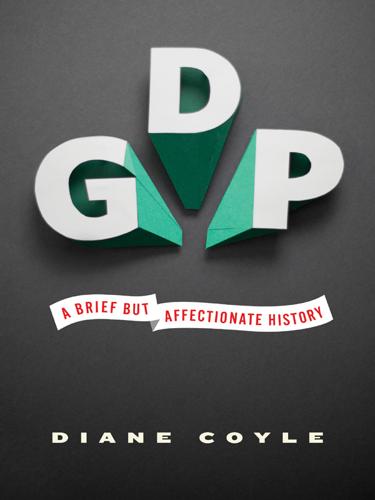Nathan Meyer Rothschild: antibiotics
description: no known link between Nathan Meyer Rothschild, a 19th-century banker, and antibiotics
3 results

GDP: A Brief but Affectionate History
by
Diane Coyle
Published 23 Feb 2014
In 1942, Merck’s first commercial batch of the lifesaving antibiotic, a precious five and a half grams of it (half the entire stock of the United States) was used on a patient with streptococcal septicemia. By 1950, it was in mass production and its price had fallen to four cents a dose, the same as one-sixteenth of a gallon of milk.3 It was not just that this flood of innovations existed but that so many people could afford them. As the economic historian David Landes observed, Nathan Meyer Rothschild, the richest man in the world of his time, died in 1836 for want of an antibiotic to cure an infection.4 This is what GDP growth consists of.
…
In addition to adding in the value of household production, they ought to be adjusting the measure upward to take account of the improvements that come from innovation. These are difficult indeed to measure. How could one begin to estimate the impact on society’s welfare of new products such as antibiotics in the 1940s, or central heating and air conditioning, or the Internet and mobile phones? Earlier, we saw how hard it is to capture quality improvements in some items in GDP. In chapter 6 I’ll return to the challenge of measuring innovation and the variety of products and services available. For now, it’s enough to acknowledge that, as the economic historian Brad DeLong expresses it, “Modern growth is so fast it’s off the scale.”37 Although GDP does not measure welfare directly, it does contribute to it and is highly correlated with things that definitely do affect our well-being, such as life expectancy and infant mortality.

Utopia for Realists: The Case for a Universal Basic Income, Open Borders, and a 15-Hour Workweek
by
Rutger Bregman
Published 13 Sep 2014
Since 2000, the number of people dying from malaria has been reduced by a quarter, and so has the number of AIDS deaths since 2005. Some figures seem almost too good to be true. For example, 50 years ago, one in five children died before reaching their fifth birthday. Today? One in 20. In 1836, the richest man in the world, one Nathan Meyer Rothschild, died due to a simple lack of antibiotics. In recent decades, dirt-cheap vaccines against measles, tetanus, whooping cough, diphtheria, and polio have saved more lives each year than world peace would have saved in the 20th century.14 Obviously, there are still plenty of diseases to go – cancer, for one – but we’re making progress even on that front.

Enlightenment Now: The Case for Reason, Science, Humanism, and Progress
by
Steven Pinker
Published 13 Feb 2018
According to an account of an 1878 Memphis epidemic, the sick had “crawled into holes twisted out of shape, their bodies discovered later only by the stench of their decaying flesh. . . . [A mother was found dead] with her body sprawled across the bed . . . black vomit like coffee grounds spattered all over . . . the children rolling on the floor, groaning.”2 The rich were not spared: in 1836, the wealthiest man in the world, Nathan Meyer Rothschild, died of an infected abscess. Nor the powerful: various British monarchs were cut down by dysentery, smallpox, pneumonia, typhoid, tuberculosis, and malaria. American presidents, too, were vulnerable: William Henry Harrison fell ill shortly after his inauguration in 1841 and died of septic shock thirty-one days later, and James Polk succumbed to cholera three months after leaving office in 1849.
…
I would not dismiss this threat completely, but frankly I am much more worried about what Mother Nature is throwing at us all the time.”62 And crucially, advances in biology work the other way as well: they also make it easier for the good guys (and there are many more of them) to identify pathogens, invent antibiotics that overcome antibiotic resistance, and rapidly develop vaccines.63 An example is the Ebola vaccine, developed in the waning days of the 2014–15 emergency, after public health efforts had capped the toll at twelve thousand deaths rather than the millions that the media had foreseen. Ebola thus joined a list of other falsely predicted pandemics such as Lassa fever, hantavirus, SARS, mad cow disease, bird flu, and swine flu.64 Some of them never had the potential to go pandemic in the first place because they are contracted from animals or food rather than in an exponential tree of person-to-person infections.
…
Doctors themselves used to be a major health hazard as they went from autopsy to examining room in black coats encrusted with dried blood and pus, probed their patients’ wounds with unwashed hands, and sewed them up with sutures they kept in their buttonholes, until Ignaz Semmelweis (1818–1865) and Joseph Lister (1827–1912) got them to sterilize their hands and equipment. Antisepsis, anesthesia, and blood transfusions allowed surgery to cure rather than torture and mutilate, and antibiotics, antitoxins, and countless other medical advances further beat back the assault of pestilence. The sin of ingratitude may not have made the Top Seven, but according to Dante it consigns the sinners to the ninth circle of Hell, and that’s where post-1960s intellectual culture may find itself because of its amnesia for the conquerors of disease.